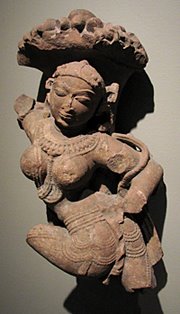"A second puzzle that Wilson [David Sloan Wilson, Darwin's Cathedral] can solve is why mysticism, everywhere and always, is about transcending the self and merging with something larger than the self. When William James analyzed mysticism, he focused on the psychological state of 'cosmic consciousness' and on the techniques developed in all the major religions to attain it. Hindus and Buddhists use meditation and yoga to attain the state of samadhi, in which 'the subject-object distinction and one's sense of an individual self disappear in a state usually described as one of supreme peace, bliss, and illumination.' James found much the same goal in Christian and Muslim mysticism, often attained through repetitive prayer. He quoted the eleventh-century Muslim philosopher Al Ghazzali, who spent several years worshipping with the Sufis of Syria. Al Ghazzali attained experiences of 'transport' and revelation that he said cannot be described in words, although he did try to explain to his Muslim readers the essence of Sufism:
The first condition for a Sufi is to purge his heart entirely of all that is not God. The next key of the contemplative life consists in the humble prayers which escape from the fervent soul, and in the meditations on God in which the heart is swallowed up entirely. But in reality this is only the beginning of the Sufi life, the end of Sufism being total absorption in God.
From Wilson's perspective, mystical experience is an 'off' button for the self. When the self is turned off, people become just a cell in the larger body, a bee in the larger hive. It is no wonder that the after effects of mystical experience are predictable; people usually feel a stronger commitment to God or to helping others, often by bringing them to God.
The neuroscientist Andrew Newberg has studied the brains of people undergoing mystical experiences, mostly during meditation, and has found where that off-switch might be. In the rear portion of the brain's parietal lobes (under the rear portion of the top of the skull) are two patches of cortex Newberg calls the 'orientation association areas.' The patch in the left hemisphere appears to contribute to the mental sensation of having a limited and physically defined body, and thus keeps track of your edges. The corresponding area in the right hemisphere maintains a map of the space around you. These two areas receive input from your senses to help them maintain an ongoing representation of your self and its location in space. At the very moment when people report achieving states of mystical union, these two areas appear to be cut off. Input from other parts of the brain is reduced, and overall activity in these orientation areas is reduced, too. But Newberg believes they are still trying to do their jobs: The area on the left tries to establish the body's boundaries and doesn't find them; the area on the right tries to establish the self's location in space and doesn't find it. The person experiences a loss of self combined with a paradoxical expansion of the self out into space, yet with no fixed location in the normal world of three dimensions. The person feels merged with something vast, something larger than the self." (pp. 235-7)





No comments:
Post a Comment